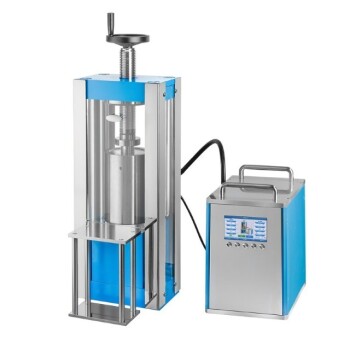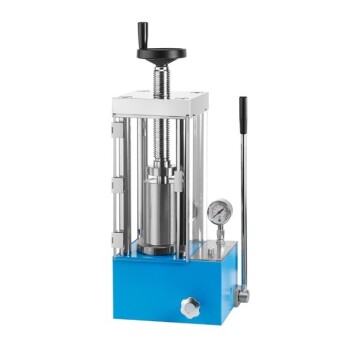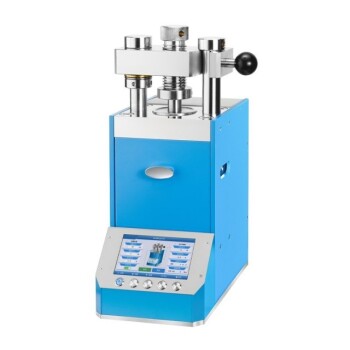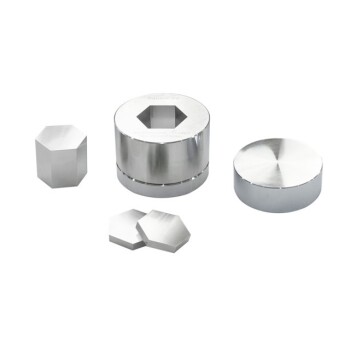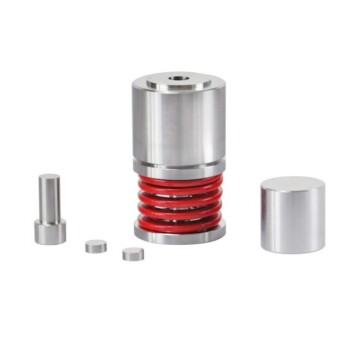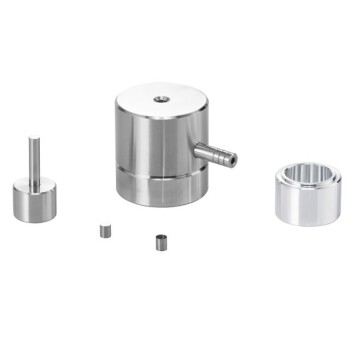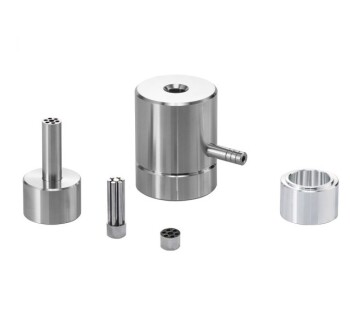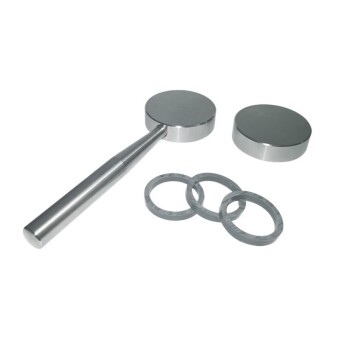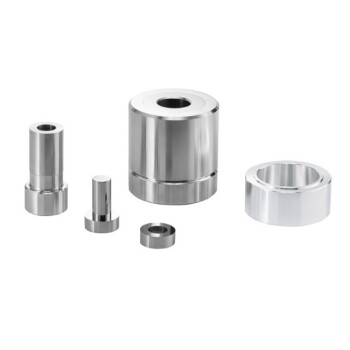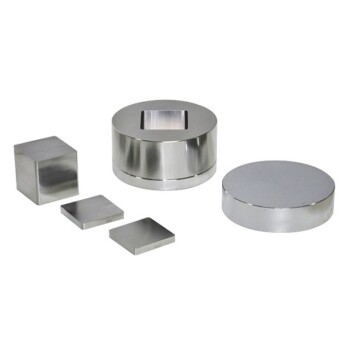Fundamentally, operating at room temperature is what makes Cold Isostatic Pressing (CIP) both highly energy-efficient and uniquely capable of processing heat-sensitive materials. Unlike processes that rely on intense heat, CIP uses a liquid medium to apply extreme, uniform pressure. This approach densifies powdered materials without altering their inherent chemical or microstructural properties, which is a critical advantage over thermal consolidation methods.
The core benefit of CIP's room temperature operation is its ability to decouple densification from thermal stress. This allows you to create a uniformly compacted part without risking the material degradation, phase changes, or warping that high temperatures can cause.
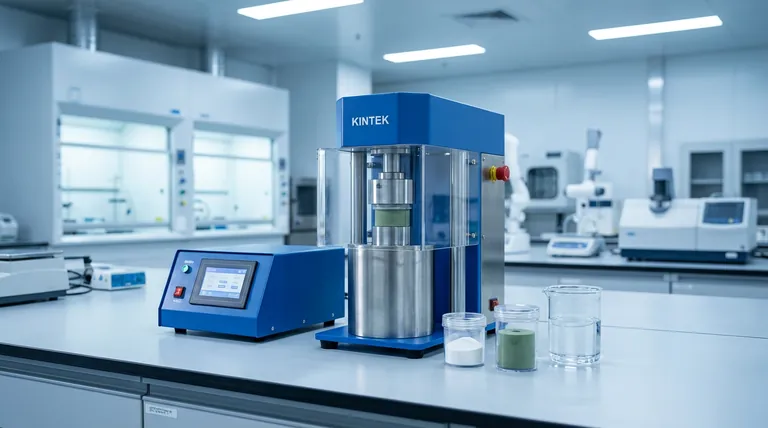
The Principle: Separating Pressure from Heat
To understand the benefits, it's essential to grasp how CIP contrasts with its high-temperature counterpart, Hot Isostatic Pressing (HIP).
How CIP Works
In CIP, a powdered material is sealed in a flexible, watertight mold. This mold is then submerged in a fluid—typically water with a corrosion inhibitor—inside a high-pressure vessel.
The fluid is pressurized, exerting uniform force from all directions onto the mold. This isostatic pressure compacts the powder into a solid, handleable object known as a "green" part.
The Contrast with Hot Isostatic Pressing (HIP)
Hot Isostatic Pressing (HIP) also uses uniform pressure, but it simultaneously applies extremely high temperatures (often exceeding 1,000°C). The heat makes the material particles soft and plastic, allowing them to fuse together and eliminate nearly all internal porosity.
The key difference is that CIP achieves densification through mechanical force alone, while HIP uses a combination of mechanical force and thermal energy.
Key Benefits of Room Temperature Operation
Eliminating heat from the densification equation yields several distinct advantages that make CIP the superior choice for specific applications.
Preserving Material Integrity
This is the most critical benefit. Many advanced materials are temperature-sensitive, meaning their desired properties are destroyed or degraded by high heat.
CIP is ideal for consolidating polymers, composites, certain ceramics, and even some metallic powders that would undergo unwanted phase transformations if heated. It compacts the material without initiating chemical reactions or altering its microstructure.
Significant Energy and Cost Savings
Heating an industrial pressure vessel to the temperatures required for HIP is an enormous energy expense. By operating at or near ambient temperature, CIP drastically reduces energy consumption.
This makes the process significantly less expensive per part, especially for high-volume production of components that will be sintered later.
Simplified Tooling and Process
High temperatures demand expensive tooling made from exotic alloys that can withstand the thermal stress. Furthermore, the heating and cooling cycles in HIP add considerable time and complexity to the process.
CIP's room temperature operation allows for simpler, less costly tooling and a much faster, more straightforward process cycle.
Minimizing Contamination
The process occurs within a sealed mold, and the low temperature prevents the types of diffusion and chemical reactions that can introduce impurities at the grain boundaries of a material. This results in a very clean, uncontaminated green part ready for the next manufacturing step.
Understanding the Trade-offs: When CIP Isn't Enough
Despite its advantages, the lack of heat is also CIP's primary limitation. It's crucial to know when another process is required.
The "Green" State Limitation
A part produced by CIP is only a "green" compact. While it is solid and can be handled, it has not yet achieved its final strength or density. The particles are mechanically interlocked, not metallurgically bonded.
To achieve final properties, a CIP'd part must almost always undergo a subsequent sintering or other thermal process to fuse the particles together.
Achieving Full Density
While CIP significantly increases density, it cannot eliminate the final few percent of porosity on its own. The particles remain solid and cannot deform perfectly to fill every microscopic void.
To achieve 99.9%+ theoretical density in a single step, the heat and pressure of HIP are necessary to enable the plastic deformation and diffusion that closes the final pores.
Making the Right Choice for Your Goal
Selecting the right process depends entirely on your material and final objective.
- If your primary focus is preserving the properties of a heat-sensitive material: CIP is the ideal choice for the initial compaction stage before a separate, carefully controlled sintering cycle.
- If your primary focus is cost-effective mass production of pre-forms: CIP's low energy use and high throughput for creating green parts make it a superior economic option.
- If your primary focus is achieving maximum theoretical density in a single step: Hot Isostatic Pressing (HIP) is the necessary choice, as heat is required to eliminate all internal porosity.
By understanding that CIP separates mechanical compaction from thermal bonding, you can strategically leverage it to produce high-integrity components while controlling costs.
Summary Table:
| Benefit | Description |
|---|---|
| Preserves Material Integrity | Avoids phase changes and degradation in heat-sensitive materials like polymers and ceramics. |
| Energy and Cost Savings | Reduces energy use by eliminating high-temperature heating, lowering operational costs. |
| Simplified Tooling and Process | Uses less expensive tooling and faster cycles without thermal stress. |
| Minimizes Contamination | Sealed, low-temperature process prevents impurities for cleaner green parts. |
Ready to enhance your lab's efficiency with precise, energy-saving compaction? KINTEK specializes in lab press machines, including automatic lab presses, isostatic presses, and heated lab presses, tailored for laboratory needs. Our solutions help you achieve uniform densification while preserving material properties—perfect for processing heat-sensitive materials. Contact us today to discuss how our CIP equipment can benefit your specific applications!
Visual Guide
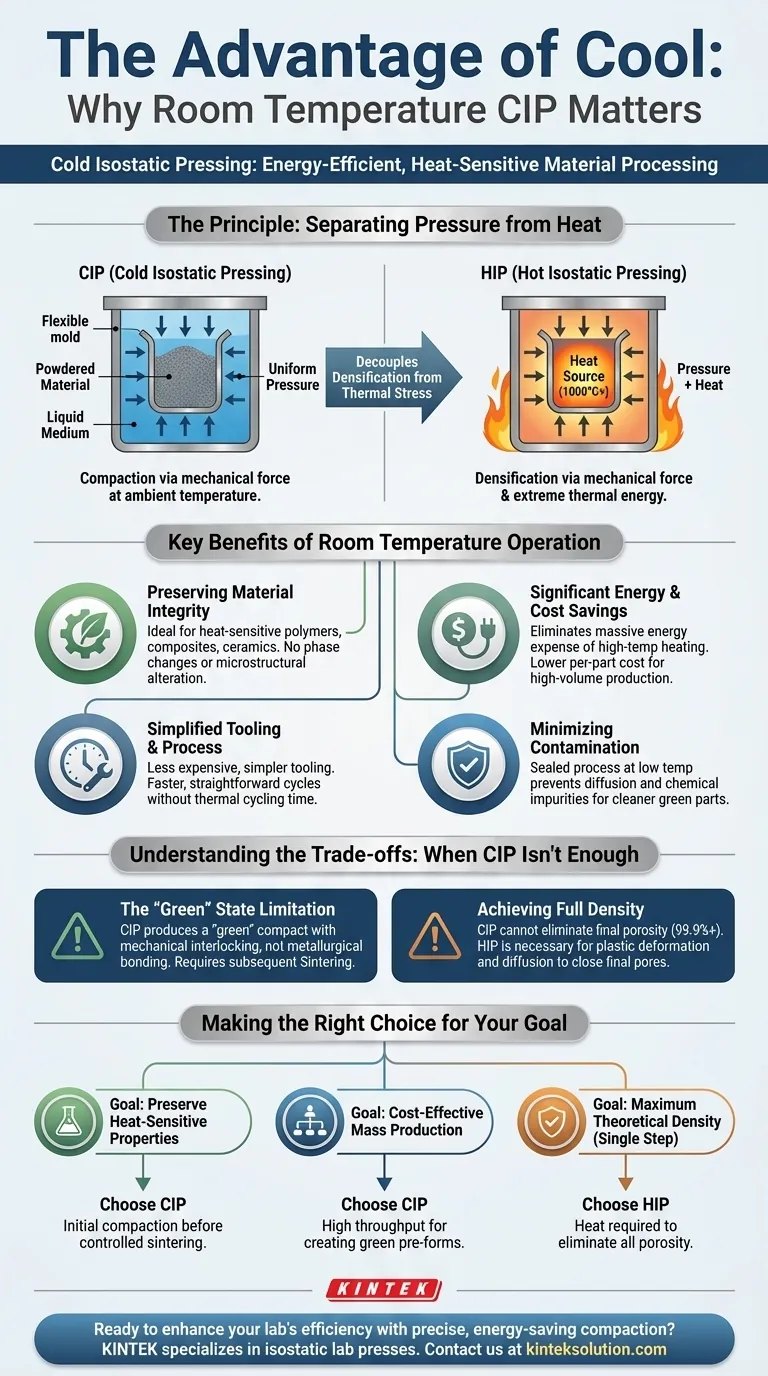
Related Products
- Electric Split Lab Cold Isostatic Pressing CIP Machine
- Manual Cold Isostatic Pressing CIP Machine Pellet Press
- Automatic Lab Cold Isostatic Pressing CIP Machine
- Laboratory Hydraulic Press 2T Lab Pellet Press for KBR FTIR
- Lab Polygon Press Mold
People Also Ask
- How is cold isostatic pressing used in complex-shaped component production? Achieve Uniform Density for Intricate Parts
- How does Cold Isostatic Pressing (CIP) compare to Powder Injection Molding (PIM) in terms of shape complexity? Choose the Best Process for Your Parts
- How does electrical Cold Isostatic Pressing (CIP) contribute to cost savings? Unlock Efficiency and Reduce Expenses
- What are the advantages of Cold Isostatic Pressing (CIP) for pellet preparation? Achieve Superior Density and Uniformity
- What are some specific aerospace applications of isostatic pressing? Enhance Performance and Reliability in Extreme Conditions
